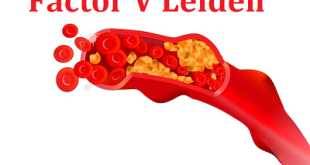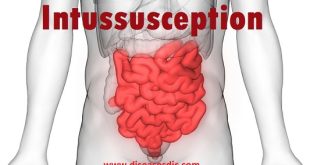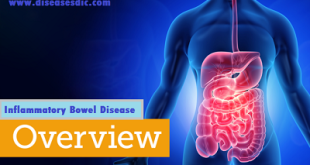What is Functional Dyspepsia?
Functional dyspepsia is a pain, indigestion, or an upset stomach that does not have an apparent cause on endoscopy, such as an ulcer. Instead, it is caused by a functional abnormality, where the muscles or nerves that control the digestive organs are not working properly. You may have pain or burning in your upper abdomen, belching, nausea, bloating, and sometimes vomiting, especially after eating.
Diagnosis relies on symptom presence and exclusion of other conditions. Treatment encompasses lifestyle adjustments, dietary changes, medications like antacids and prokinetic agents, and psychological interventions like cognitive behavioral therapy for symptom management, as functional dyspepsia lacks a one-size-fits-all solution. Consulting a healthcare professional is crucial for accurate diagnosis and tailored management.
Types of Functional Dyspepsia
Functional dyspepsia (FD) is categorized into two main subtypes based on the predominant symptoms experienced by individuals. These subtypes help healthcare professionals better understand and manage the condition. The two main subtypes of functional dyspepsia are:
Postprandial Distress Syndrome (PDS)
PDS is characterized by symptoms that occur after eating, typically within an hour or so. These symptoms often include a feeling of fullness, early satiety (feeling full before finishing a meal), and upper abdominal bloating or discomfort. People with PDS may experience these symptoms even after consuming a relatively small amount of food.
Epigastric Pain Syndrome (EPS)
EPS is characterized by recurrent pain or burning sensations in the upper central part of the abdomen, known as the epigastric region. The pain may come and go and can be accompanied by other symptoms such as bloating and nausea.
It’s important to note that some individuals may experience a combination of both PDS and EPS symptoms, and these subtypes can overlap.
In addition to these subtypes, functional dyspepsia can also be categorized based on the underlying physiological disturbances. These categories are not as commonly used for diagnosis but can provide insights into the mechanisms contributing to the condition. The physiological categories of functional dyspepsia include:
- Meal-Related Functional Dyspepsia:
- This category involves symptoms that are triggered specifically by eating, often related to the size of the meal. It can include symptoms like fullness, bloating, and discomfort.
- Meal-Unrelated Functional Dyspepsia:
- In this category, symptoms occur independently of meals. The abdominal pain or discomfort can occur at any time, even when the stomach is empty.
- Overlap with Other Disorders:
- Sometimes, functional dyspepsia can overlap with other gastrointestinal disorders such as irritable bowel syndrome (IBS), gastroesophageal reflux disease (GERD), and others. This can complicate the diagnosis and management of symptoms.
It’s important to remember that functional dyspepsia is a complex condition, and the symptoms and subtypes can vary from person to person. If you suspect you have functional dyspepsia or are experiencing persistent digestive symptoms, it’s recommended to consult a healthcare professional for proper diagnosis and management.
Epidemiology
The community prevalence of dyspepsia is typically quoted in the range of 20% to 40%, and the disorder accounts for 3% to 5% of primary care visits. Of patients with investigated dyspepsia, approximately 70% have negative endoscopic studies and approximately 50% to 60% are subsequently classified as functional dyspepsia. Admittedly, estimating the prevalence of functional dyspepsia is challenging due to variable diagnostic criteria used in prevalence studies, the overlap in symptoms with other disorders, and inconsistent interpretation of dyspepsia symptoms. Risk factors include female sex, increasing age, Helicobacter pylori infection, high socioeconomic status, smoking, and nonsteroidal anti-inflammatory drug use.
Pathophysiology of Functional Dyspepsia
Functional dyspepsia, once deemed idiopathic, is undergoing a shift in perspective. Instances of functional dyspepsia emerging subsequent to acute infectious gastroenteritis suggest a potential role of acute intestinal inflammation. Helicobacter pylori, a recognized culprit of functional dyspepsia, does not invariably lead to the condition; often, it’s an incidental discovery. However, in a minority of cases, eradication of this infection results in enduring relief from dyspepsia, particularly when dominated by epigastric pain.
Functional dyspepsia has exhibited disruptions in gastric and duodenal motility. While gastric emptying is typically within norms, it can be protracted in a quarter of patients or, albeit rarely, accelerated. Nonetheless, symptoms have generally displayed weak correlation with delayed gastric emptying. Another anomaly involves impaired relaxation of the gastric fundus post-meals, a phenomenon observed in up to 40% of cases and linked to early satiety. Nearly one-third of instances encompass hypersensitivity to distension in the stomach or duodenum, signifying visceral hypersensitivity.
Individuals experiencing postprandial distress manifest distinctive duodenal irregularities: an elevation in duodenal eosinophils, which could potentially undergo degranulation. These elevated eosinophils associate with heightened mucosal permeability, structural and functional modifications in submucosal neurons, and symptomatic presentation. Such occurrences might be indicative of an infectious or allergenic trigger. Additionally, in functional dyspepsia cases, the duodenal microbiome displays anomalies, including elevated oral streptococci. Psychological distress is prevalent among functional dyspepsia patients; intriguingly, it can emerge subsequent to the onset of gastrointestinal symptoms. While anxiety is commonly observed, the occurrence of depression should not be overlooked.
Illustrative depiction of the potential elements contributing to the pathophysiology of FD.
Signs and Symptoms of Functional Dyspepsia
Symptoms have lasted for 3 months or more and can include:
- Feeling full too quickly
- Burping a lot
- A burning feeling in the middle of your chest
- Pain that doesn’t get better after a bowel movement or passing gas
- Upset stomach (nausea) or vomiting after eating
- Feeling bloated
- Loss of appetite
You may also have symptoms of irritable bowel syndrome (IBS). These can include ongoing constipation or diarrhea.
Causes of Functional Dyspepsia
Functional dyspepsia is indigestion with no clear cause (such as an ulcer, gastritis or acid reflux). The gastrointestinal tract of individuals who have been diagnosed with the disorder will appear healthy.
Despite this, there are certain triggers which may bring on or worsen the symptoms of the condition. They include:
- Smoking and alcohol
- Obesity
- Stress and anxiety
- Infection with the germ Helicobacter pylori (not all people with the condition will have Helicobacter pylori in their stomach, and many people with the Helicobacter pylori germ will experience no symptoms)
- Impairment of the stomach muscles, leading to slowed emptying of the stomach into the duodenum (first segment of the small intestine)
- Roughly one in three people with the disorder also experience irritable bowel syndrome (IBS). The cause of IBS, however, is unknown, meaning that the possible link between IBS and indigestion has not yet been properly established
What are risk factors of functional dyspepsia?
Some factors can increase the risk of functional dyspepsia. They include:
- Being female.
- Using certain pain relievers that are available without a prescription. These include aspirin and ibuprofen (Advil, Motrin IB, others), which can cause stomach problems.
- Smoking.
- Anxiety or depression.
- History of childhood physical or sexual abuse.
- Helicobacter pylori infection.
Complications
Here are some potential complications or challenges associated with functional dyspepsia:
Lower Quality of Life: Continuous stomach discomfort can make life less enjoyable and cause feelings of sadness or worry.
Impaired Nutritional Intake: Feeling full quickly or having little appetite due to discomfort can lead to eating too little or too much.
Weight Changes: Functional dyspepsia can cause weight loss or gain because of changes in eating habits.
Feeling Alone: Discomfort around food might make it hard to socialize, leading to spending less time with friends and family.
More Doctor Visits: People might go to the doctor often due to ongoing symptoms, which can be costly and time-consuming.
Misdiagnosis and Overtreatment: Similar symptoms to other stomach problems can lead to wrong diagnoses or unnecessary tests.
Trouble at Work or School: Feeling unwell can make it tough to focus and do well at your job or in school.
Impact on Mental Health: Dealing with ongoing stomach issues might make you feel more anxious or down.
Medicine Side Effects: Medications taken for relief might have unwanted effects or react with other drugs.
How to diagnosis functional dyspepsia?
In order to diagnose functional dyspepsia, your doctor will need to rule out other potential causes of your persistent indigestion. This might involve conducting tests such as:
- X-rays: X-ray images can indicate evidence of a blockage or obstruction.
- Barium swallow: A special series of X-rays is taken of your esophagus and stomach after you drink small amounts of a liquid containing barium, a contrast material that coats your esophagus and stomach and shows up well on X-rays. This can help to detect ulcers, inflammation of the stomach, or possibly tumors.
- Breath test: This test can identify the presence of Helicobacter pylori, the bacterium that causes stomach ulcers or small intestinal bacterial overgrowth.
- A stool sample: This lab test checks for abnormal bacteria and parasites in your digestive tract.
- CT scan: A computed tomography (CT) scan combines X-ray and computer technology to produce detailed cross-sectional images of your intestines.
- Upper endoscopy: A thin, lighted tube with a camera attached to it is passed through your mouth and esophagus. Your physician can look at your digestive tract and evaluate any abnormalities or blockages. Biopsies can also be obtained to evaluate for microscopic causes of symptoms.
- Capsule endoscopy: A tiny camera, embedded in a small capsule that you swallow, takes pictures of your stomach and small intestine.
- Gastric Emptying Study: A radiologic study during which food is consumed and the length of time the food remains in the stomach is assessed.
- Wireless Motility Capsule: A small capsule which contains pressure, temperature, and pH sensors allowing us to calculate stomach, small intestine, and colon transit times.
Treatment
If you test positive for a bacterial infection, antibiotics are the initial treatment. If functional dyspepsia continues without a clear cause, symptom management becomes the focus. Treatment involves:
- Acid Reduction: Short-term medication to reduce stomach acid, allowing the stomach lining to heal. Prescription options like proton pump inhibitors (PPIs) and H2 receptor blockers are common, often used for a few months.
- Prokinetic Agents: These drugs aid digestion by promoting proper movement of food through the digestive system, preventing reflux.
- Phytotherapy: Herbal combinations, like peppermint and caraway oil, or products like Iberogast® with multiple ingredients, can help stimulate digestion and soothe the digestive system.
- Low-Dose Antidepressants: Tricyclic antidepressants (TCAs) in low doses might help manage pain, discomfort, and nervous system-related symptoms.
These medications target different factors contributing to symptoms, but overall success in treating functional dyspepsia varies. Other management strategies include:
- Acupuncture: Some studies suggest improvement with consistent acupuncture.
- Behavioral Therapy: Techniques like relaxation, biofeedback, and psychotherapy could regulate the nervous and digestive systems.
- Diet Adjustments: While not a primary factor, identifying trigger foods and avoiding them helps. Keeping a food journal or trying an elimination diet can be beneficial.
- Lifestyle Changes: Weight loss, exercise, adequate sleep, and stress reduction contribute to symptom improvement.
Functional dyspepsia is complex, and treatments have moderate success rates.
Prevention of Functional Dyspepsia
Here are some general tips that might be helpful:
Dietary Habits:
- Eat smaller, more frequent meals to avoid overloading your stomach.
- Avoid excessive consumption of fatty, greasy, spicy, or heavily processed foods.
- Identify and avoid trigger foods that worsen your symptoms. Common triggers might include caffeine, alcohol, citrus fruits, carbonated beverages, and chocolate.
Healthy Eating:
- Opt for a balanced diet rich in fruits, vegetables, whole grains, lean proteins, and healthy fats.
- Chew your food thoroughly and eat slowly to aid digestion.
- Avoid eating close to bedtime, as lying down can worsen symptoms.
Hydration:
- Stay adequately hydrated, as dehydration can sometimes exacerbate digestive discomfort.
Stress Management:
- Practice stress reduction techniques such as deep breathing, meditation, yoga, or progressive muscle relaxation.
- Engage in activities you enjoy and find relaxing to help manage stress levels.
Regular Exercise:
- Engage in regular physical activity, as it can help promote healthy digestion and reduce stress.
Avoid Smoking and Alcohol:
- Both smoking and excessive alcohol consumption can contribute to digestive issues, so it’s advisable to avoid or limit these habits.
Medications:
- If necessary, your doctor might prescribe medications to manage symptoms such as antacids, acid blockers, or prokinetic agents. Always consult a healthcare professional before starting any new medication.
Medical Evaluation:
- If you experience persistent or severe symptoms, it’s important to consult a doctor. They can perform necessary tests to rule out other potential causes and provide appropriate guidance.
Keep a Food Diary:
- Keeping a record of your diet and symptoms can help you identify patterns and potential triggers that worsen your condition.
Medical Advice:
- Work closely with a healthcare provider to develop a personalized plan for managing functional dyspepsia. They can offer guidance tailored to your specific needs.
Remember, functional dyspepsia can vary from person to person, and what works for one individual might not work for another. It’s important to consult a healthcare professional for accurate diagnosis and guidance on managing your condition.
 Diseases Treatments Dictionary This is complete solution to read all diseases treatments Which covers Prevention, Causes, Symptoms, Medical Terms, Drugs, Prescription, Natural Remedies with cures and Treatments. Most of the common diseases were listed in names, split with categories.
Diseases Treatments Dictionary This is complete solution to read all diseases treatments Which covers Prevention, Causes, Symptoms, Medical Terms, Drugs, Prescription, Natural Remedies with cures and Treatments. Most of the common diseases were listed in names, split with categories.








it is very interesting ideas and knowledge that many many people should read and get best out out of it.